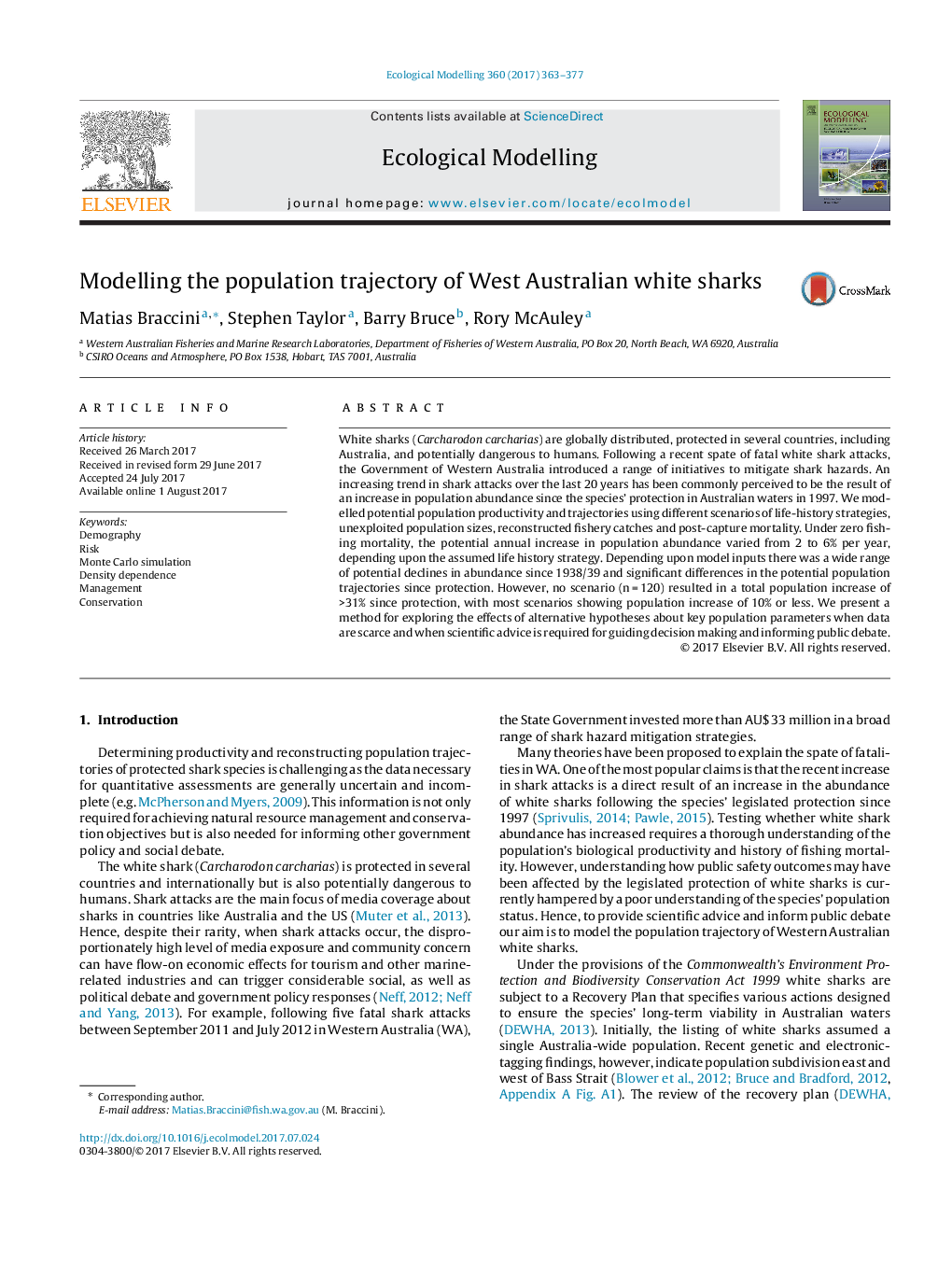| Article ID | Journal | Published Year | Pages | File Type |
|---|---|---|---|---|
| 5742075 | Ecological Modelling | 2017 | 15 Pages |
â¢We modelled potential population productivity and trajectories of West Australian white sharks.â¢Increase in population abundance varied from 2 to 6% per year under no fishing pressure.â¢No modelling scenario resulted in a total population increase of >31% since species protection.
White sharks (Carcharodon carcharias) are globally distributed, protected in several countries, including Australia, and potentially dangerous to humans. Following a recent spate of fatal white shark attacks, the Government of Western Australia introduced a range of initiatives to mitigate shark hazards. An increasing trend in shark attacks over the last 20 years has been commonly perceived to be the result of an increase in population abundance since the species' protection in Australian waters in 1997. We modelled potential population productivity and trajectories using different scenarios of life-history strategies, unexploited population sizes, reconstructed fishery catches and post-capture mortality. Under zero fishing mortality, the potential annual increase in population abundance varied from 2 to 6% per year, depending upon the assumed life history strategy. Depending upon model inputs there was a wide range of potential declines in abundance since 1938/39 and significant differences in the potential population trajectories since protection. However, no scenario (n = 120) resulted in a total population increase of >31% since protection, with most scenarios showing population increase of 10% or less. We present a method for exploring the effects of alternative hypotheses about key population parameters when data are scarce and when scientific advice is required for guiding decision making and informing public debate.
